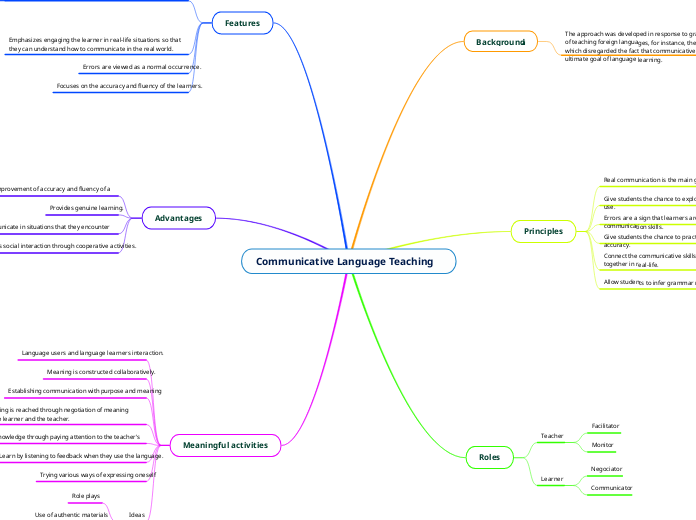
The approach was developed in response to grammar-focused methods of teaching foreign languages, for instance, the audiolingual method, which disregarded the fact that communicative competence is the ultimate goal of language learning.
Real communication is the main goal of teaching.
Give students the chance to explore and put their knowledge to use.
Errors are a sign that learners are improving their communication skills.
Give students the chance to practise their fluency and accuracy.
Connect the communicative skills as they frequently occur together in real-life.
Allow students to infer grammar rules.
Teacher
Facilitator
Monitor
Learner
Negociator
Communicator
Teaching a foreign language with an emphasis on the growth of communicative competence.
Having language proficiency.
Adjust our language according to the context and the audience.
Being able to produce a variety of texts.
Communicate while having limited linguistic proficiency
Emphasizes engaging the learner in real-life situations so that they can understand how to communicate in the real world.
Errors are viewed as a normal occurrence.
Focuses on the accuracy and fluency of the learners.
Encourages the improvement of accuracy and fluency of a language.
Provides genuine learning.
Students will communicate in situations that they encounter every day.
Encourages social interaction through cooperative activities.
Language users and language learners interaction.
Meaning is constructed collaboratively.
Establishing communication with purpose and meaning
Understanding is reached through negotiation of meaning between the learner and the teacher.
Acquiring knowledge through paying attention to the teacher's feedback
Learn by listening to feedback when they use the language.
Trying various ways of expressing oneself
Ideas
Role plays
Use of authentic materials
Classroom projects